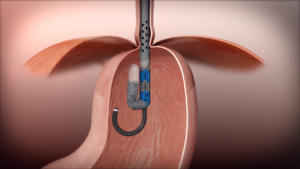Acid reflux is a common, persisting pain in the esophagus. It occurs when a ring of muscle at the end of the esophagus does not close the way it should. That ring of muscle between the stomach and the esophagus is called the lower esophageal sphincter. The opening provides a way for stomach contents to enter the esophagus. Acid reflux occurs when stomach acid leaks back into the esophagus. Known more generally as reflux, this causes significant irritation.
Acid reflux is very common amongst adults. More than 60 million Americans experience the condition at least once each month. Some people experience it far more frequently. If you have acid reflux more than twice each week, you may have acid reflux disease, also known as gastroesophageal reflux disease, or GERD. Around 20% of people in the United States have GERD.
GERD is a serious condition that affects many people and can ultimately lead to esophageal cancer. When not treated, GERD can cause debilitating symptoms including: difficulty swallowing, heartburn, serious cough, and difficulty sleeping and eating.
GERD can also lead to harmful health complications. Some of those health complications include:
This innovative procedure reconstructs the antireflux valve using a device called the EsophyX device and restores the body’s natural  protection against reflux. The TIF procedure is performed under general anesthesia and takes less than an hour. During the procedure, your doctor will guide the EsophyX device with an endoscope through the mouth, esophagus, and into the stomach. The EsophyX device reconstructs the antireflux valve by wrapping the upper portion of the stomach (fundus) around the damaged lower portion of the esophagus. It’s then secured with polypropylene fasteners (fundoplication). Your doctor will leave fasteners in place to secure the newly constructed valve while you heal. There’s no need to remove them as the body heals around them.
protection against reflux. The TIF procedure is performed under general anesthesia and takes less than an hour. During the procedure, your doctor will guide the EsophyX device with an endoscope through the mouth, esophagus, and into the stomach. The EsophyX device reconstructs the antireflux valve by wrapping the upper portion of the stomach (fundus) around the damaged lower portion of the esophagus. It’s then secured with polypropylene fasteners (fundoplication). Your doctor will leave fasteners in place to secure the newly constructed valve while you heal. There’s no need to remove them as the body heals around them.
In recent studies, TIF patients reported 80% improvement in quality of life, significantly improved satisfaction, and reduction/elimination of heartburn symptoms. All patients discontinued medication after the TIF procedure, and 79% were still completely off daily medication two years after the procedure.
Candidates for the TIF procedure are patients who have either no hiatal hernias, or small hiatal hernias, and are experiencing symptoms of GERD. Patients with larger hiatal hernias may require minor repair surgery prior to the TIF procedure in order to fully benefit from the procedure.
You may be a candidate for TIF if:
